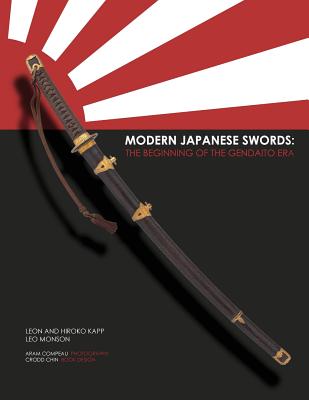Modern Japanese Swords: The Beginning of the Gendaito era

Modern Japanese Swords: The Beginning of the Gendaito era
The modern era of Japanese swords began with the Meiji restoration in 1868. The demand for new swords fell drastically, and by 1876, there was almost no work for most sword smiths. However, with the expansion of Japanese military organizations, a new demand for traditional swords developed and this became very important by around 1930. As a result of this, there was a large increase in the number of swords being made, and there was an effort to train many new sword smiths. The major groups and people involved in these efforts are described here. In addition, there was a strong emphasis on making fully traditional Japanese swords, and all of these smiths tried to conform with these demands. However, there was not enough of the traditional Japanese steel called tama hagane to meet the demand, and consequently, not all swords were fully traditional, although most did appear to be fully traditional. Almost all of the swords made at this time were also mounted in functional mountings which were suitable for use at this time. These swords are shown and described along with the steel used in their construction, their shapes and hamon. Examples from some of the the most prominent smiths are shown and briefly discussed, and the major schools and groups of sword smiths working at the time are also described. This was the beginning of the Gendaito period for Japanese swords which began with the beginning of the Meiji period at the end of the feudal period. However, these early Gendaito are different in many respects from the traditional Gendaito made after WWII ended in 1945.
PRP: 302.25 Lei
Acesta este Prețul Recomandat de Producător. Prețul de vânzare al produsului este afișat mai jos.
272.02Lei
272.02Lei
302.25 LeiLivrare in 2-4 saptamani
Descrierea produsului
The modern era of Japanese swords began with the Meiji restoration in 1868. The demand for new swords fell drastically, and by 1876, there was almost no work for most sword smiths. However, with the expansion of Japanese military organizations, a new demand for traditional swords developed and this became very important by around 1930. As a result of this, there was a large increase in the number of swords being made, and there was an effort to train many new sword smiths. The major groups and people involved in these efforts are described here. In addition, there was a strong emphasis on making fully traditional Japanese swords, and all of these smiths tried to conform with these demands. However, there was not enough of the traditional Japanese steel called tama hagane to meet the demand, and consequently, not all swords were fully traditional, although most did appear to be fully traditional. Almost all of the swords made at this time were also mounted in functional mountings which were suitable for use at this time. These swords are shown and described along with the steel used in their construction, their shapes and hamon. Examples from some of the the most prominent smiths are shown and briefly discussed, and the major schools and groups of sword smiths working at the time are also described. This was the beginning of the Gendaito period for Japanese swords which began with the beginning of the Meiji period at the end of the feudal period. However, these early Gendaito are different in many respects from the traditional Gendaito made after WWII ended in 1945.
Detaliile produsului










